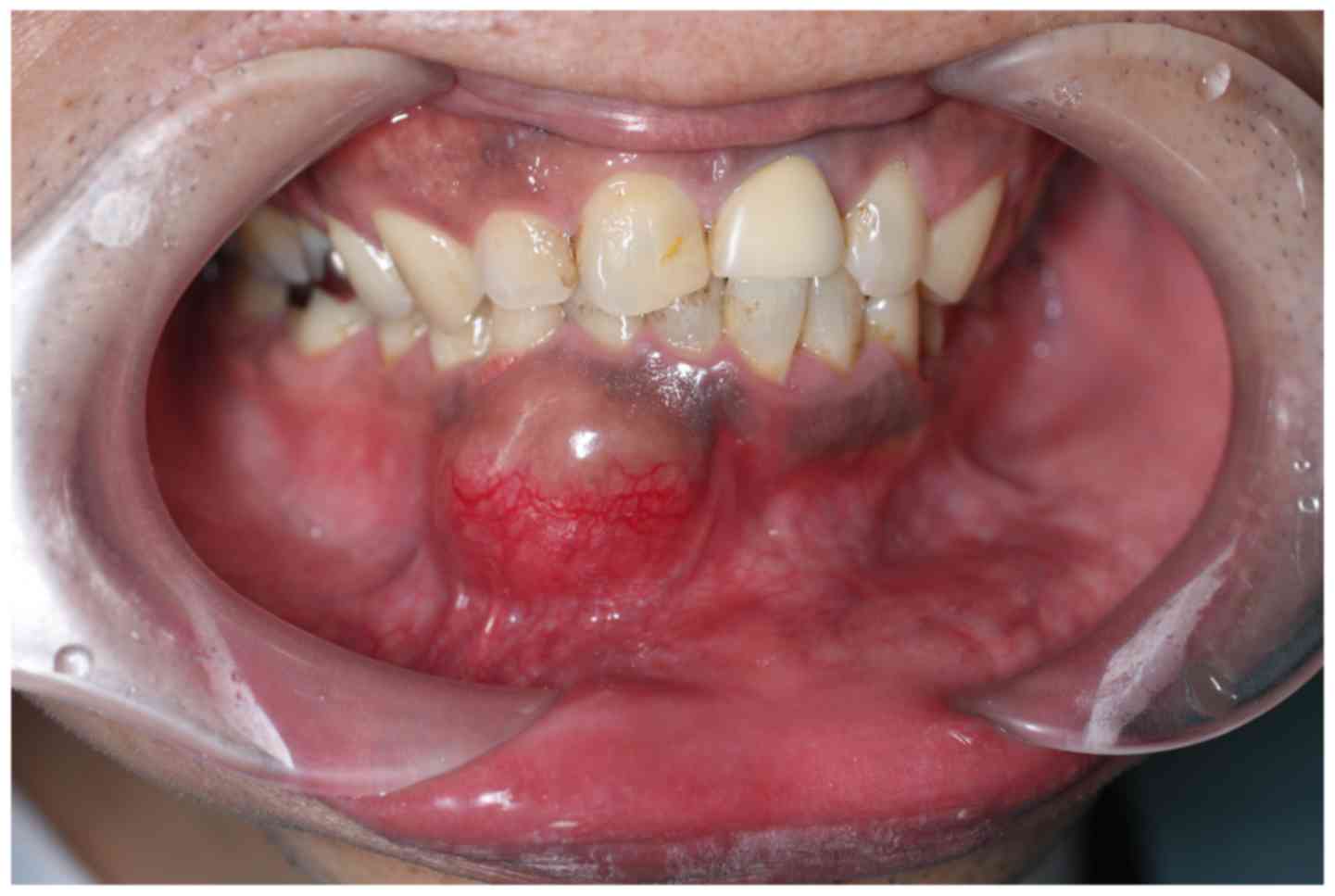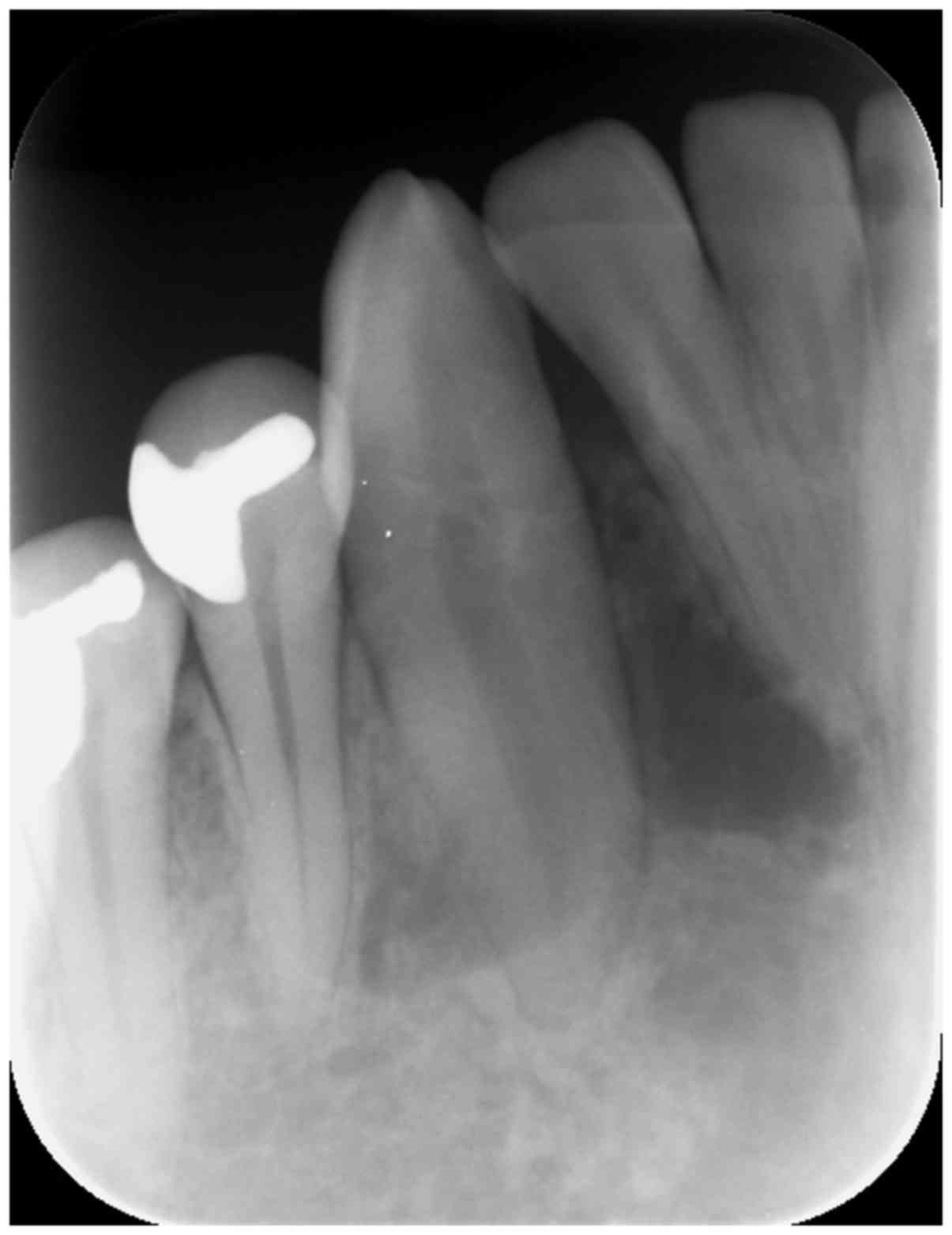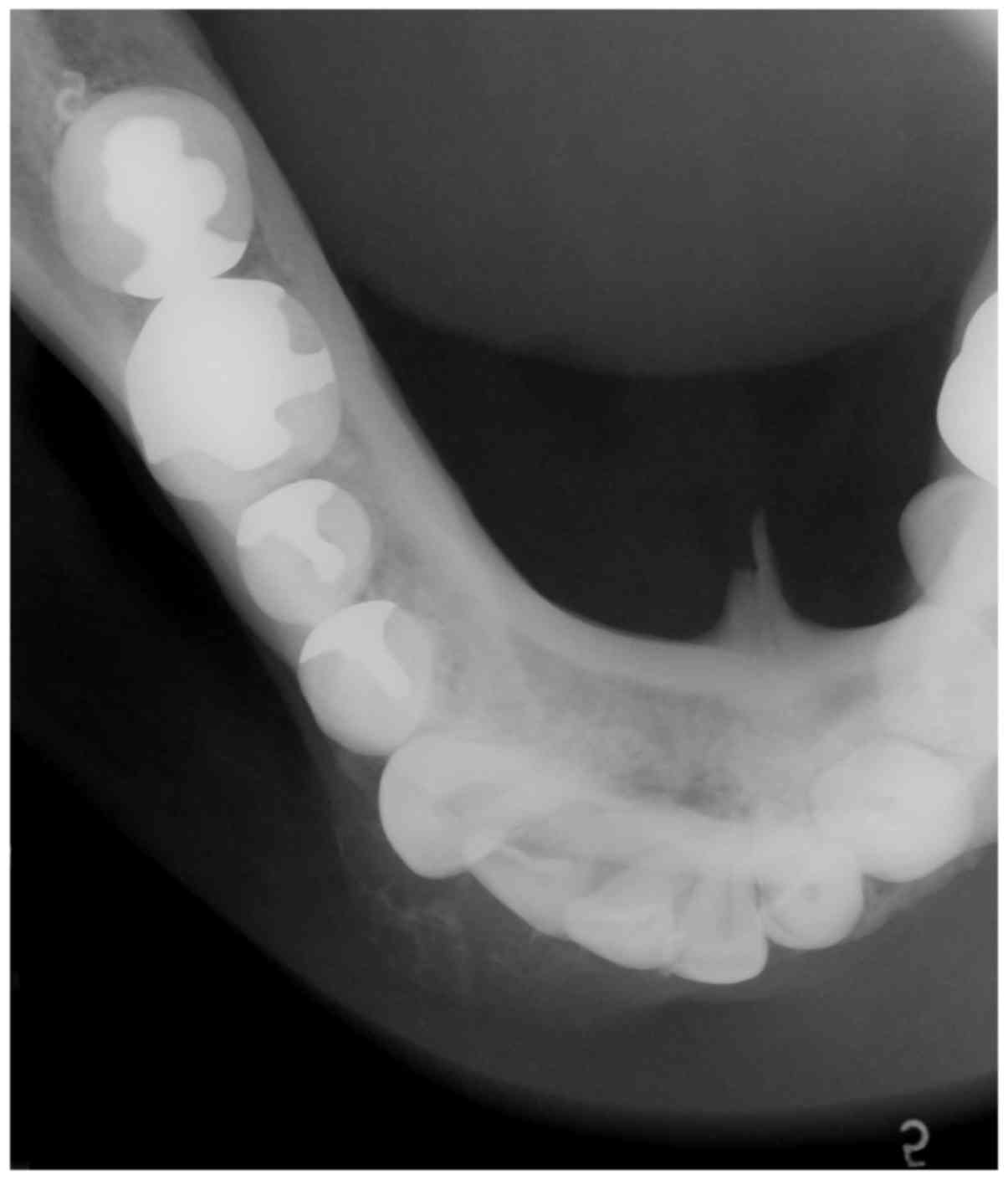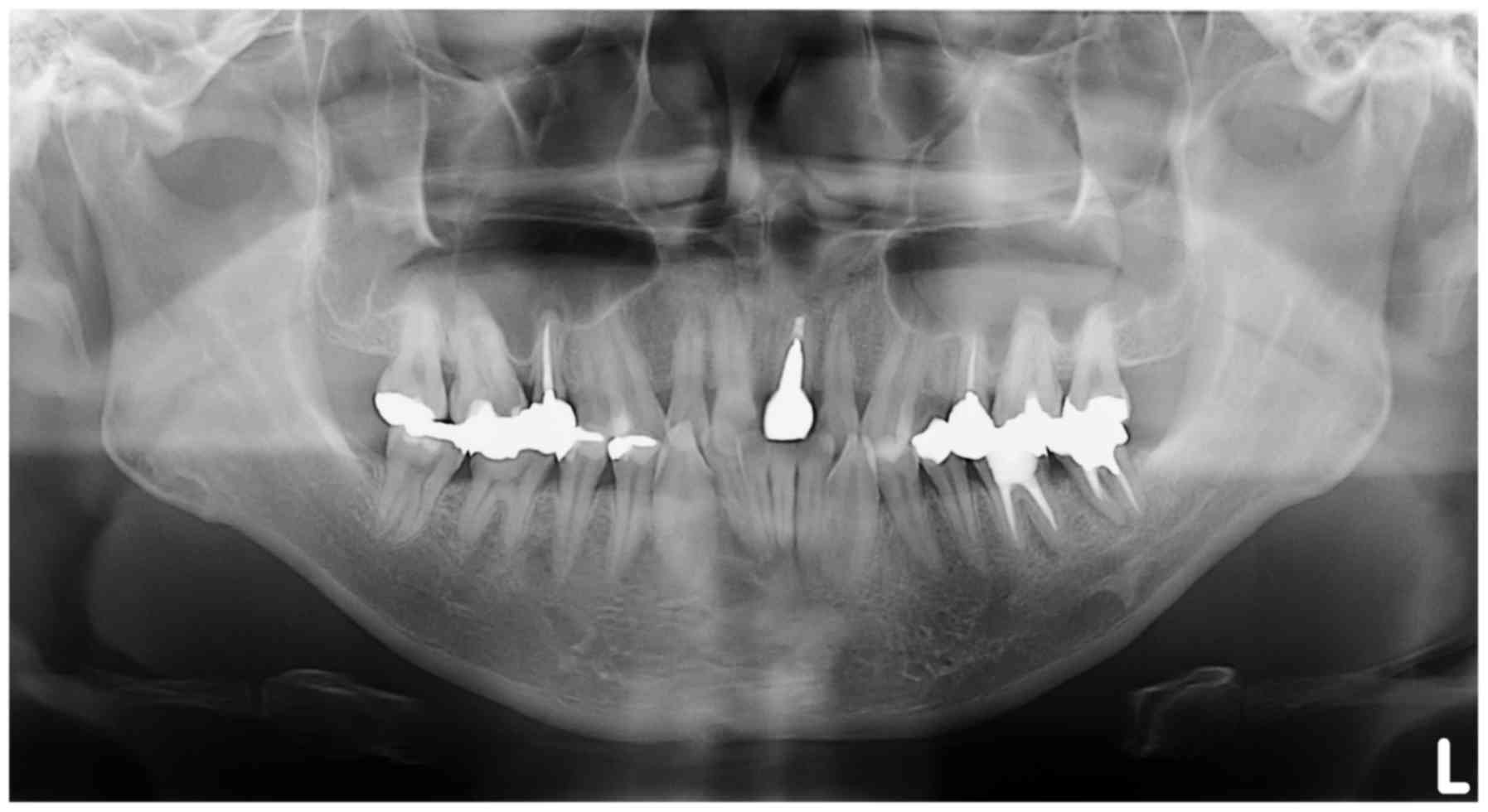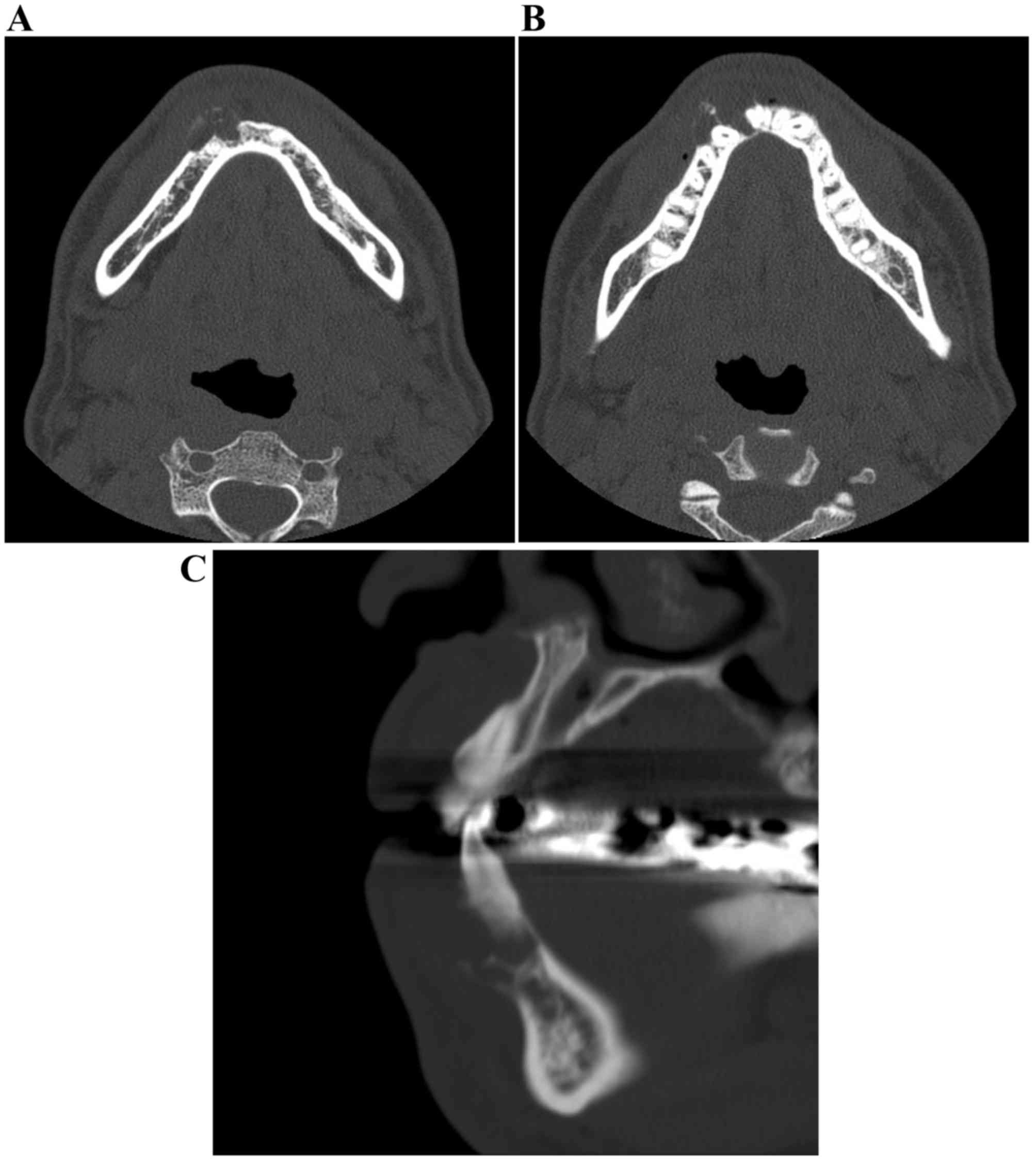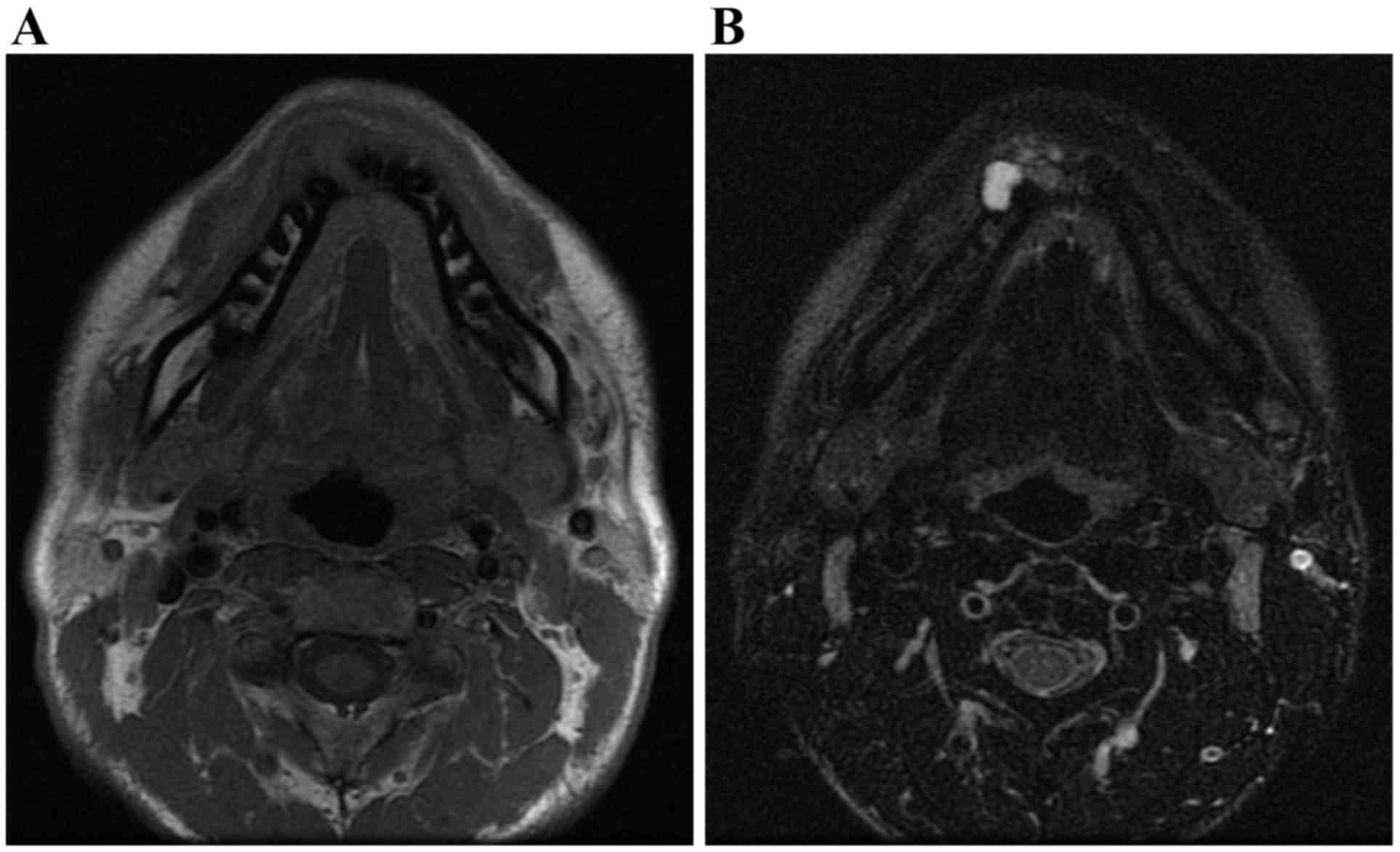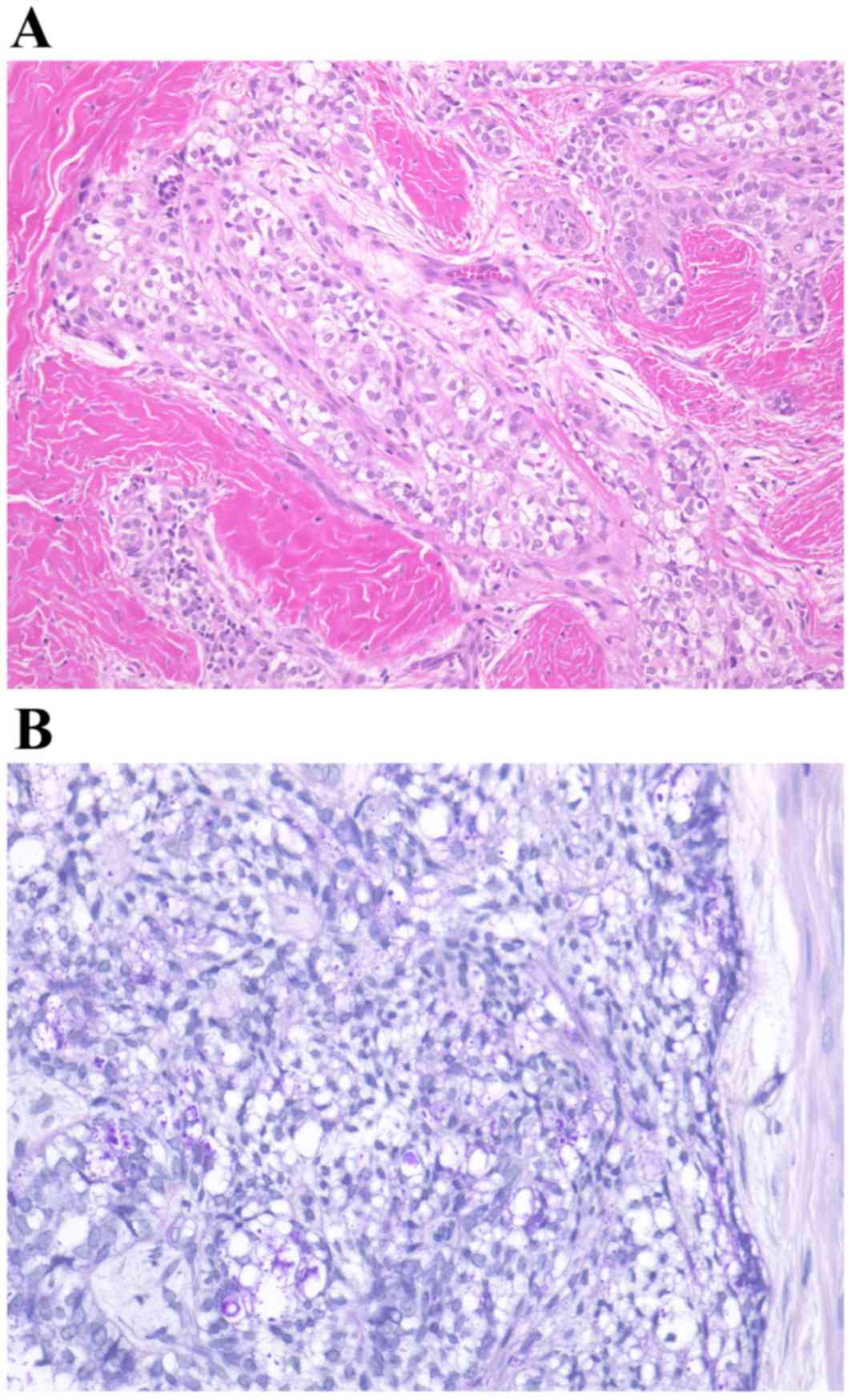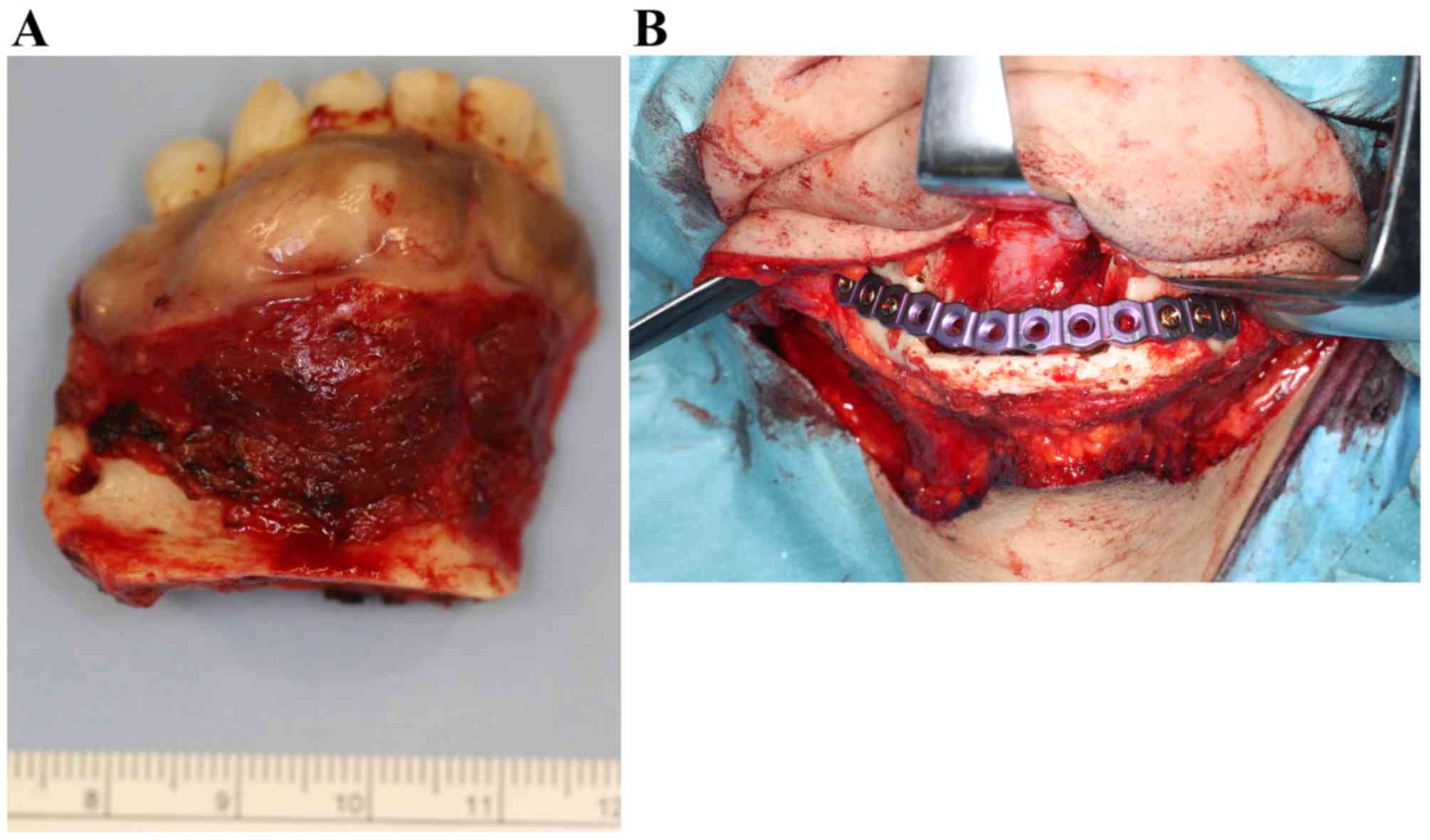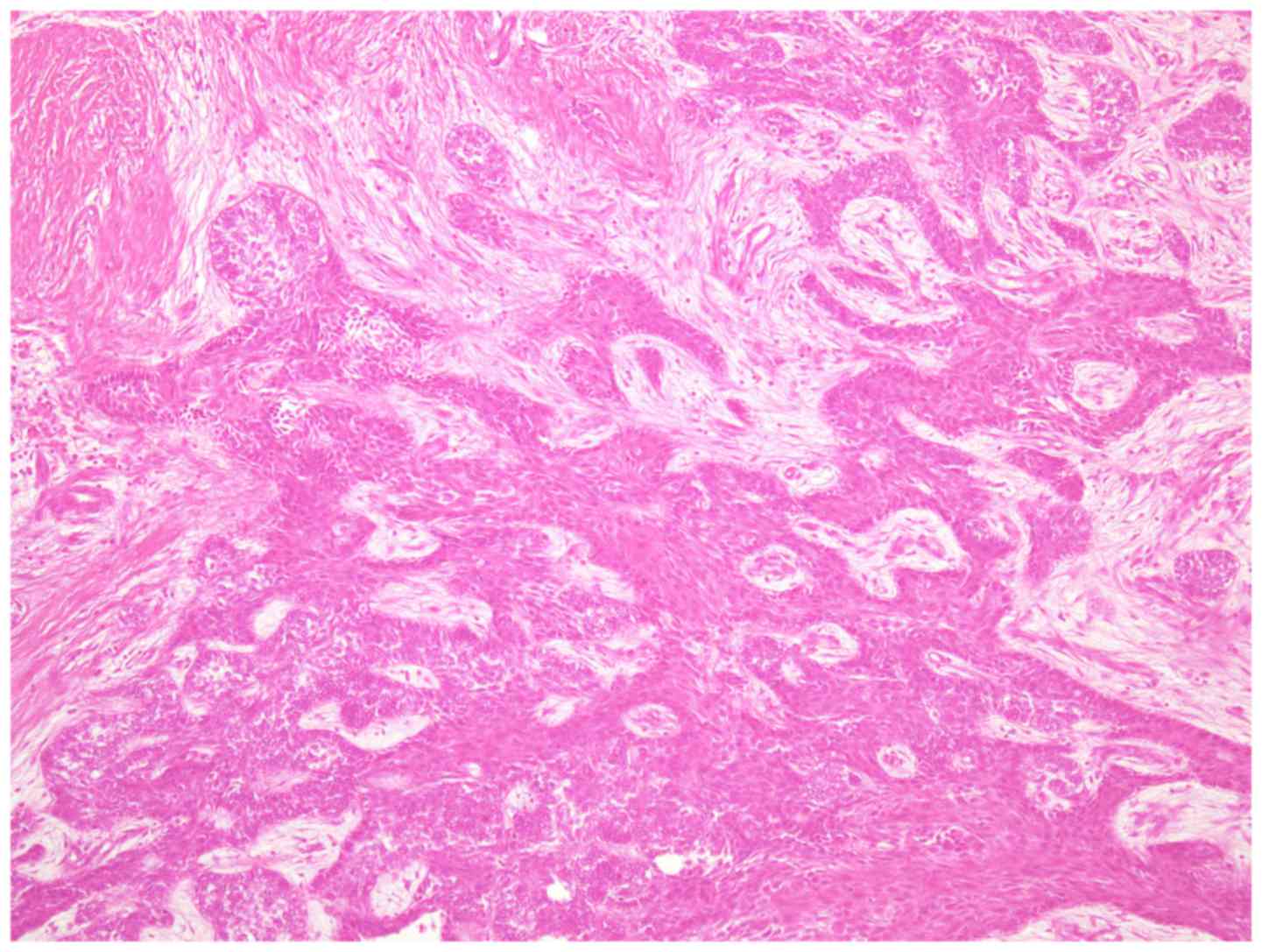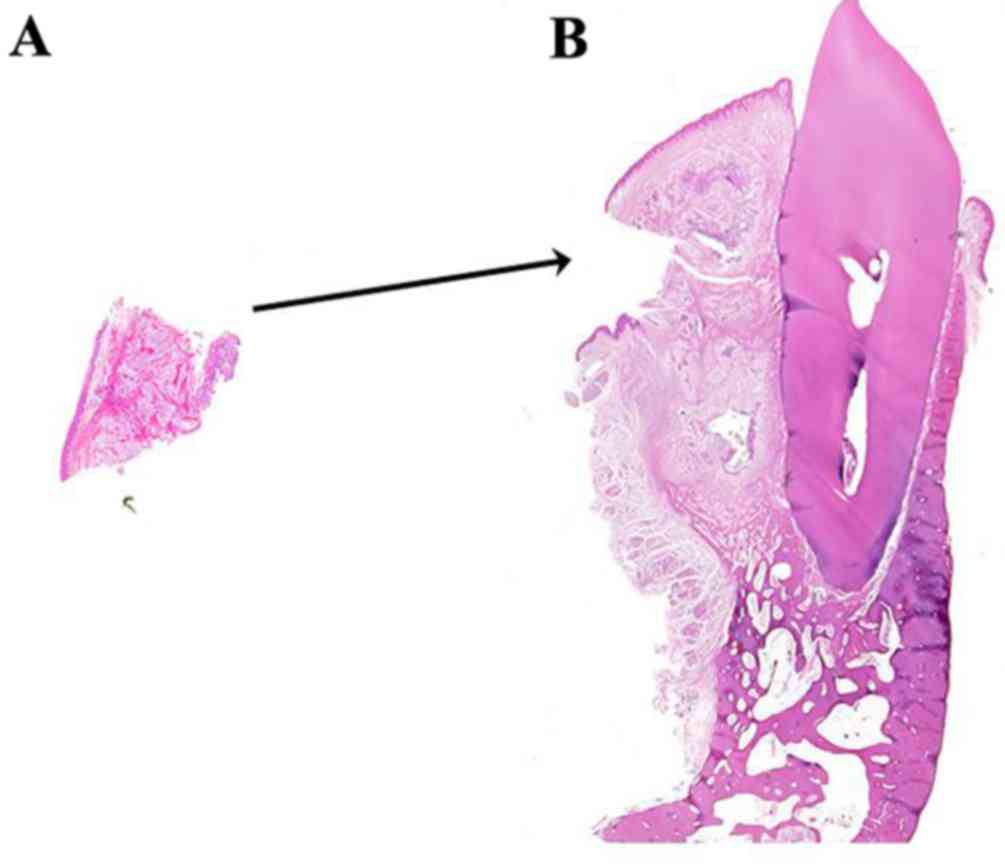The role of computed tomography and magnetic resonance imaging in diagnosing clear cell ameloblastoma: A case report
- Authors:
- Published online on: October 2, 2017 https://doi.org/10.3892/ol.2017.7116
- Pages: 7257-7261
-
Copyright: © Gamoh et al. This is an open access article distributed under the terms of Creative Commons Attribution License.
Metrics: Total
Views: 0 (Spandidos Publications: | PMC Statistics: )
Total PDF Downloads: 0 (Spandidos Publications: | PMC Statistics: )
Abstract
Ameloblastoma is the most common and clinically relevant type of odontogenic tumor. Clear cell odontogenic carcinoma is histologically characterized by solid sheets and nests of clear cells, whereas clear cell ameloblastoma (CCAM) is histologically characterized by an ameloblastomatous component intermixed with an extensive clear cell component. A total of 12 reports have been published on the histological etiology for CCAM; however, no reports have made regarding the detailed computed tomography and/or magnetic resonance imaging features of tumors of this type. The present study describes a case of a well‑circumscribed 20‑mm radiolucent lesion of the anterior mandible that was misdiagnosed as a clear cell odontogenic carcinoma. The study describes the detailed radiological characteristics of a case of CCAM.



